Warning: Undefined variable $post_types in /home2/searcpia/steadyrabbit.in/wp-content/plugins/yet-another-related-posts-plugin/classes/YARPP_Core.php on line 1103
Development – whether it’s the web, mobile app, or a desktop app – has been intelligently segregated into a client-side and a server-side.
Both frontend and backend have their own set of programming languages and each of these languages has its cult following. The web is full of articles, memes, and jokes praising one language and disparaging the other; so much so that, between a backend developer and the frontend, the banter continues to this day.
Ever since people have found out that the frontend can be independently developed, there has been a flood of technologies and frameworks to ease the process. Every day we hear about a new frontend framework that promises to take the development world by storm but vanishes sooner than a proverbial wisp in the wind. This has further contributed to an overabundance of articles and guides that often proven to be more confusing than helpful.
The following image attempts to showcase the available frameworks:
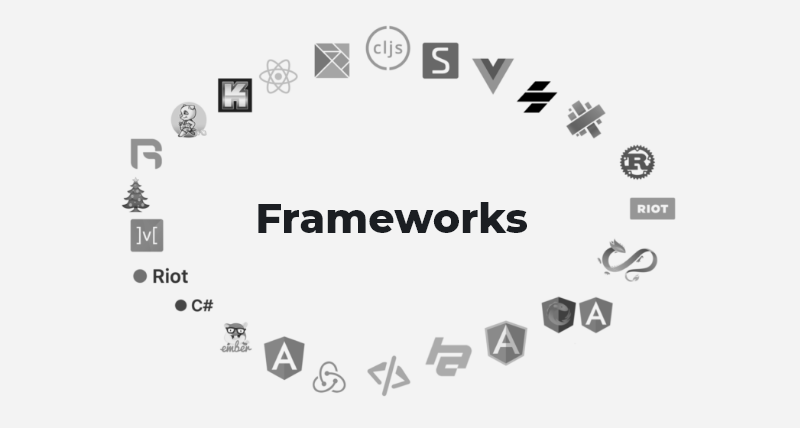
Frontend development or client-side development has always been relegated to ‘making things pretty’ while conveniently forgetting that frontend development requires both artistic compassion and programmatic meticulousness.
How Can One Make the Correct Choice?
As a firm in its initial stages of product development, it is understandable if you are confused and at a stage where you must make a tough choice. Thankfully, there’s a litmus test that can help you make this decision faster. As most of the frontend frameworks focus on accessibility and responsiveness, we shall drop it in favour of other parameters such as:
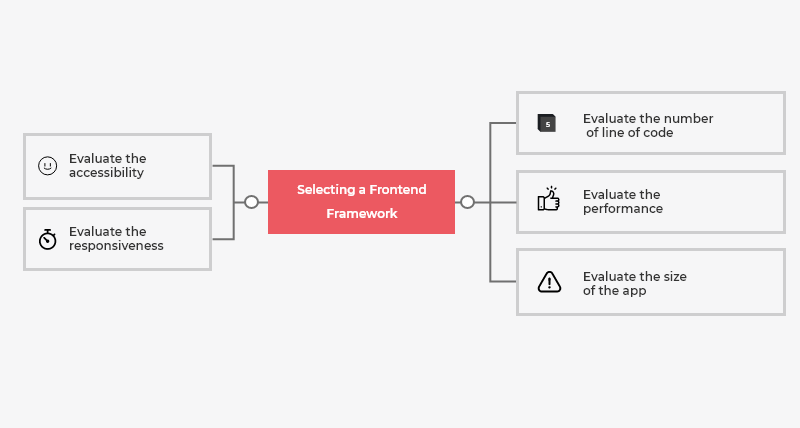
- Performance: How much time does the app take to become usable?
- Size: How big is the app? Users may not be so forgiving if the app hogs up storage on the device.
- Lines of Code: How many lines of code did the developer churn to render the app? Lines of code roughly translate to hours spent.
Keeping these in mind, let us discuss React and Angular – some of the more popular names for frontend development – to help you make an informed decision.
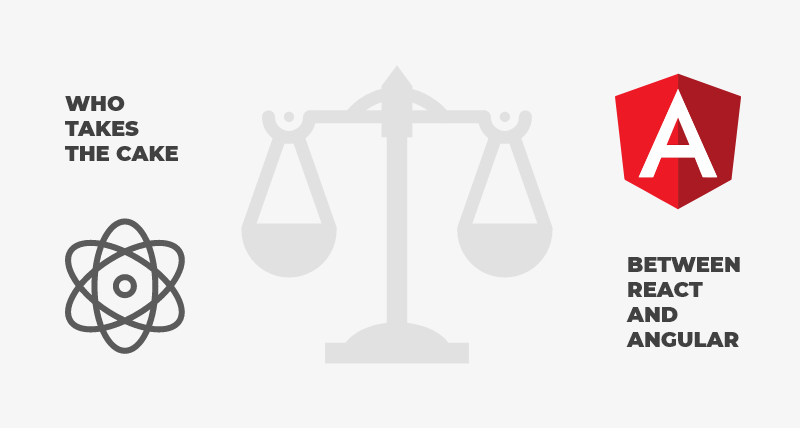
React

React was developed at Facebook® to solve code maintenance issues. React application development is open-source, easier to scale, and has reusable components for app development. The learning curve can be considered steep as the JSX used to inject HTML in web pages may not be intuitive to some.
However, with help of Babel-REPL, the dependency on JSX is redundant.
React is a developer favorite and widely used to create dynamic and beautiful user interfaces. It walks the talk by being blessed with a successful online community, comprehensive documentation, and hosting tutorials and courses for developers of varying acumen, on its website. It comes clubbed with React Native, a framework for developing mobile apps.
You can use it to render single-page websites as well as dynamic websites that display changing the content as per users’ input.
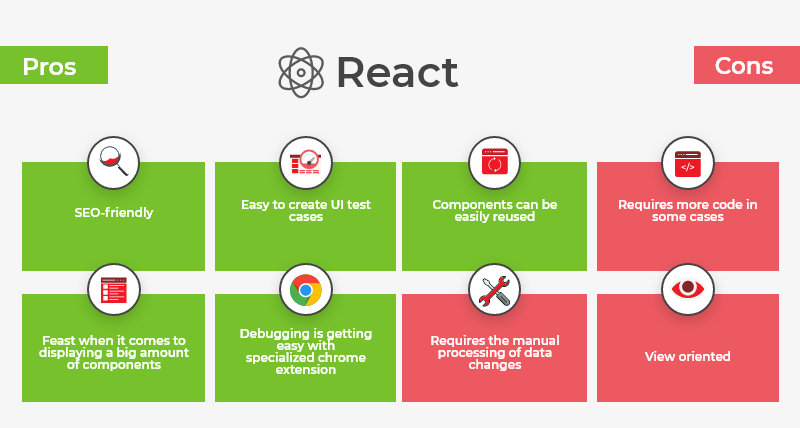
Pros:
- Reusable components and code. Each module of your app can be exported and reused elsewhere saving you time to build an app.
- Creating interactive user interfaces seems like a breeze.
- The learning curve for React is sharp but not as steep as most of its peers. The tutorials and courses on its website help smoothen the curve.
- The modular nature of React helps in scaling your app.
- Easy debugging with React DevTools.
- A virtual Document Object Model (virtual DOM) helps improve the app performance, as the framework renders the HTML and CSS in a virtual DOM and then directly pushes it to an actual DOM.
Cons:
- A separate React Native is needed to build mobile apps.
- React is evolving at a pace that may be intimidating to new developers.
- The documentation is struggling to keep up with the pace with which the framework is evolving.
- There are multiple approaches to implementing React. This gives rise to inefficiencies resulting from multiple approaches in large teams.
- Since it is a library, it requires the help of other libraries to furnish a fully functional app.
- The SEO-friendliness of websites developed in React has always been questionable.
Want to know more about React, check out our article on ‘Why users may love an app made on React’.
Angular
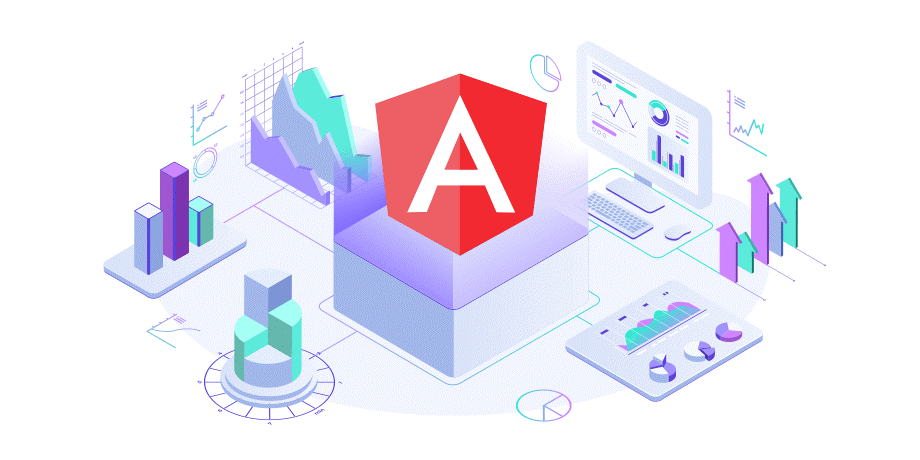
Angular is a super-popular framework currently maintained by Google. Angular promises a 6-monthly update and is currently at version 11, released on Nov 11, 2020.
Angular was built using Typescript unlike its predecessor AngularJS, which was built using JavaScript. It helps reduce the lines of code that you must write to build Angular apps to a great extent. Angular contains all libraries required to build apps for all platforms – web, mobile, and desktop.
Pros:

- Code Splitting is one of the biggest advantages when compared to peers. Angular apps load faster thanks to their component router. The framework splits the code, so the users load only the code that was related to their request.
- The rendering of your app or your site is very fast and SEO-friendly as it happens in HTML and CSS.
- A template syntax helps create a faster UI POC.
- Angular enjoys the support of multiple IDEs and code editors thereby helping you spend more time writing and less time debugging.
- Angular helps you create reusable components that can easily be used anywhere in your application.
- A large thriving community of developers eager to help and provide solutions.
- It is compatible with large teams and may appear intimidating in the beginning but is helpful in the long run.
Cons:
- Despite the tutorials and documentation available online, learning Angular is not easy.
- Developing in Angular requires a shift from JavaScript to TypeScript, which often causes developers to be hesitant.
- Migrating from AngularJS to Angular takes significant time should you have legacy code.
- The final build size is larger as compared to a React app.
- Angular might appear verbose and complex as it is a self-sustaining package and does not require any other component to begin with.
- It sacrifices flexibility for structure.

You can now compare the pros and cons to decide which monsters you are willing to live with. Each technology presents a bouquet of benefits and can prove to be an asset towards building your products if wisely incorporated.
To avoid the headache and to develop a professional looking app from the get-go, book a consultation with Steady Rabbit or contact us.
